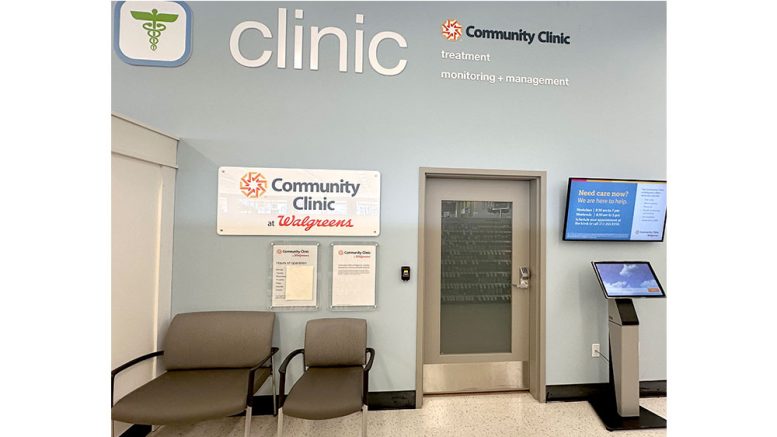By AMY ADAMS
news@readthereporter.com
A new Community Clinic at Walgreens opens today in the Walgreens at 2380 Pleasant St., Noblesville … just in time to diagnose and treat influenza, which is spreading throughout the area.
According to the update of the Indiana Department of Health’s Indiana Influenza Dashboard on Monday, Feb. 11, the incidence of Influenza-Like Illness (ILI) is listed as “Very High.” More than 50 Hoosiers have died so far this year from influenza-related causes.

Stanley
According to Nurse Practitioner Nekia Stanley, who is part of the opening of the local Community Clinic at Walgreens, medical professionals are seeing a high number of diagnoses of Influenza A, as compared with Influenza B or COVID-19.
Highly contagious through tiny droplets produced when infected individuals talk, sneeze, or cough, influenza often affects the nose, throat, and lungs.
According to Stanley, the top three symptoms of Influenza A include fever, sore throat, and cough. Other symptoms may include headache, body aches, chills, and fatigue. Nausea and vomiting are also common in children with the flu more so than in adults.
In addition to Influenza A, Stanley said she is seeing a lot of cases of viral upper respiratory tract infections, the symptoms of which can be quite similar to flu.
“It is hard for patients to differentiate what they have,” Stanley said.
One notable difference, she said, is that the onset of flu often occurs more abruptly. In addition, headaches are more common with flu, whereas a viral illness results in a feeling of fullness in the head.
Antiviral medications like Tamiflu can be an option for a patient who sees a health care provider within the first 48 hours. However, Stanley said that antivirals often come with side effects. For adults, that can mean dizziness and vomiting. For children, it can lead to vomiting and nightmares.
For the above reasons, Stanley does not push antiviral medication, especially in children. She said that many people recover without being seen by a medical professional.
“This is a self-limiting illness,” she said. “It’s going to go away. I recommend supportive care. Listen to your body. Take time to rest. Push fluids.”
Stanley said patients should use caution with pain relievers, such as acetaminophen and ibuprofen. While they can prove helpful for some, they are not intended for those under six months of age. These and other over-the-counter medications should not be taken by those with certain underlying medical conditions, and, of course, those who have been told they should not take such medications. The American Academy of Pediatrics (AAP) does not recommend over-the-counter cough and cold medicines for children under the age of six unless directed by a physician.
How long will the flu last? This is the question everyone is asking.
Stanley said that days three through five are generally the worst and that it commonly takes seven to 10 days for a patient to recover.
“If that time has passed and you have worsening symptoms, you should be seen,” she said.
A fever for longer than five days is one example of a symptom that requires follow up with a medical professional. In addition, though Stanley said the cough is often the last symptom to go and can last up to a month, a worsening cough, especially a productive one, is cause to be seen in a clinic.
Likewise, patients who are 65 and older, younger than five, or have health issues, such as asthma, diabetes, or heart disease, should be monitored more closely.
Anyone experiencing breathing problems should go to the nearest emergency room. Other than that, Stanley advised people to stay away from the ER and to instead make an appointment with their provider or go to urgent care.
“Sometimes people have trouble getting into primary care right now,” Stanley said.
In that case, Stanley said the Community Clinic in Walgreens is open seven days a week.
“We take care of the overflow,” she said. “It’s all about access.”
Stanley said the Community Clinic at Walgreens offers “immediate care,” filling the gap between primary care and urgent care. The clinic can test for flu and COVID-19, treat minor infections, and write refills for prescriptions as long as they aren’t controlled medicines.
The Community Clinic at Walgreens also offers flu vaccines. With flu season running from October through May, Stanley does not see the illness going away anytime soon.
“It’s not too late in the season to get a flu shot,” she said. “That is the top way to protect yourself.”
The Community Clinic at Walgreens is open Monday through Friday from 8:30 a.m. to 7 p.m. and Saturday and Sunday from 8:30 a.m. to 5 p.m. Appointments are required. For more information, call (317) 355-9250 or visit ecommunity.com/locations/community-clinic-walgreens-noblesville-content.

